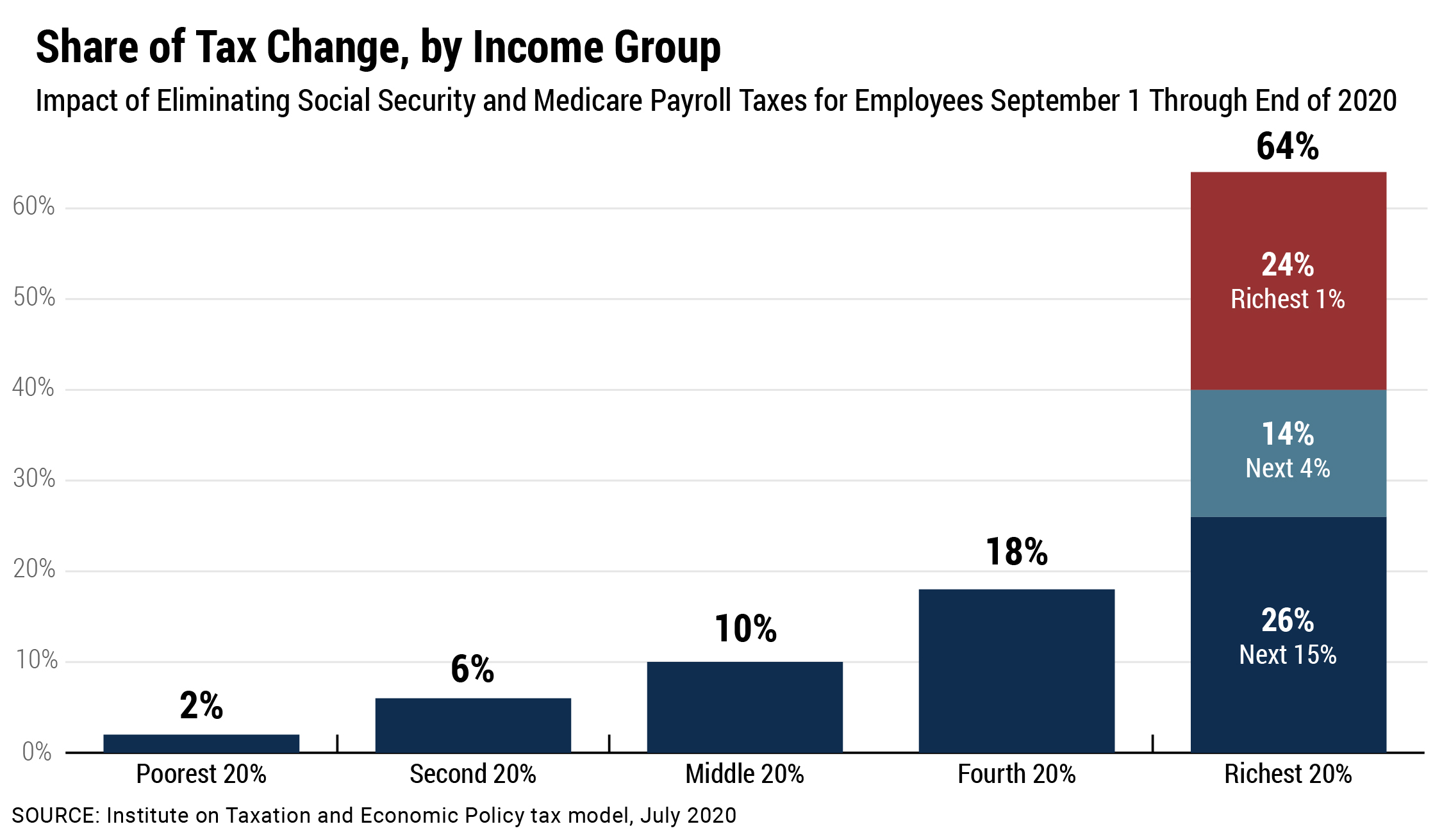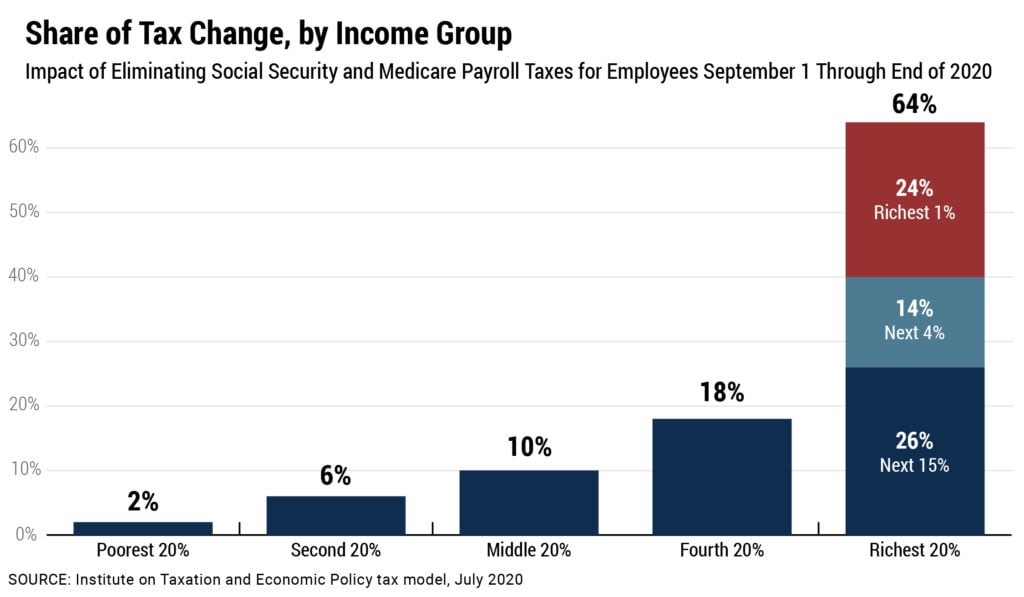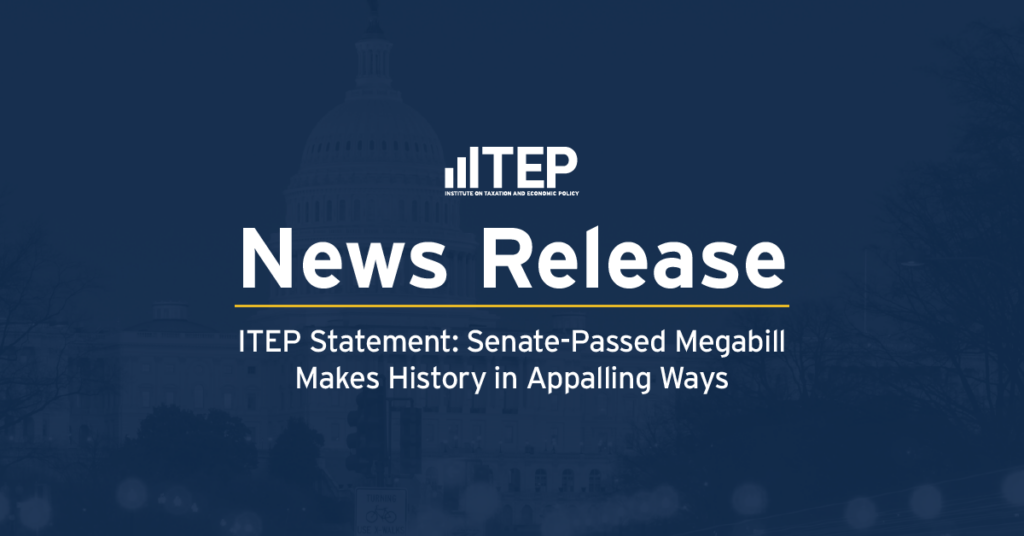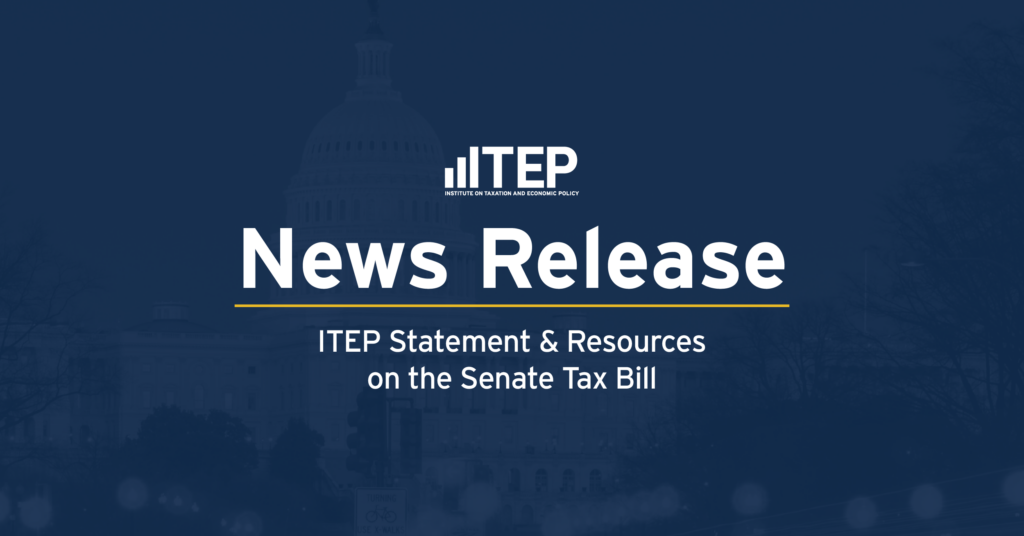Temporarily eliminating all federal payroll taxes through the end of the year would cost $336 billion, deliver 64 percent of its benefits to the richest 20 percent of households and fail to provide help to unemployed workers who are struggling most due to the economic downturn, the Institute on Taxation and Economic Policy said today.
The White House has insisted that the next round of COVID-19 relief include a payroll tax “holiday,” but hasn’t clarified how lawmakers should structure it. ITEP’s new analysis reveals how temporarily eliminating the payroll tax from Sept. 1 through the end of 2020 would affect workers across the income spectrum and estimates the impact on federal revenues.
The analysis finds: Nearly two-thirds of a payroll tax cut would go to the richest 20 percent of taxpayers. Nearly a quarter (24 percent) would go to the top 1 percent of taxpayers, who have average incomes of $2 million, while the poorest 20 percent of workers would receive just 2 percent of the overall benefit. The payroll tax cut analyzed here would boost income by an average of $51,840 for the top 1 percent, compared to $250 for the poorest 20 percent. It would direct about $81 billion combined to the top 1 percent, substantially more than the $60 billion that would go to all taxpayers in the bottom 60 percent.
“It makes zero sense to offer tax cuts—of any type—that would put the most money in the pockets of those who need it least,” said Steve Wamhoff, director of federal policy at ITEP and an author of the study. “Unemployment remains at record levels and with a COVID-19 resurgence, it may get worse before it gets better. Policymakers should ask themselves how best to help those who are struggling due to job loss rather than offering policy solutions that are weighted in favor of the most affluent.”
Social Security is funded by a tax of 12.4 percent of earned income up to $137,700 for 2020. Employees pay half (6.2 percent) and employers pay the other half. Medicare is funded by a tax of 2.9 percent on earnings with no maximum, also evenly split between employers and employees. Lawmakers last cut the payroll tax in 2011 and 2012 during the Obama Administration. Then, they reduced the Social Security portion of payroll taxes paid by employees from 6.2 percent to 4.2 percent. At that time Congress replaced the funds with general revenue, but some lawmakers nonetheless questioned whether this would weaken the program in the long run. At the time (just before the general election), GOP leaders refuted the claim that the cut would put money in the pockets of families. Even then, a large share of the benefit went to the highest-earning households.
The White House has provided scant details, but it appears to be pushing a much larger payroll tax cut, including all payroll taxes paid to fund both Social Security and Medicare.
“At the very time when Americans feel like their economic stability is slipping away, the White House appears to be pushing tax cuts that could weaken their retirement and health security,” Wamhoff said.





